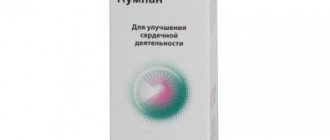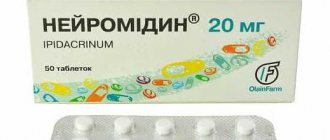Directions for use and dosage
Taking Strattera capsules does not depend on the time of eating. Children and adolescents weighing less than 70 kg should begin with a total daily dose of approximately 0.5 mg/kg and increase over at least 3 days to a target total daily dose of approximately 1.2 mg/kg, given as a single daily dose in the morning or as evenly divided doses in the morning and late afternoon/early evening.
Children weighing more than 70 kg and adults should start at a total daily dose of 40 mg and increase after at least 3 days to a target total daily dose of approximately 80 mg, given as a single daily dose in the morning or as evenly distributed doses in the morning and late afternoon. / early evening.
Strattera®
ADHD symptoms of impaired attention and hyperactivity (identified in more than one social environment, such as home and school) may manifest as lack of concentration, distractibility, excessive impatience, impulsivity, disorganization, restlessness, and other similar behavioral problems. A diagnosis of ADHD must meet accepted diagnostic criteria.
Suicidal thoughts and behavior.
While taking the drug in clinical studies in children and adolescents, the likelihood of developing suicidal thoughts increased. In 12 clinical studies in 2200 patients (including 1357 patients receiving atomoxetine and 851 patients receiving placebo), of which 0.37% of cases in the atomoxetine group showed the development of suicidal thoughts (5 out of 1357 patients), suicidal thoughts in the placebo group thoughts were not identified. During these clinical studies, one suicide attempt was reported and there were no completed suicides. All reactions were observed in children 12 years of age within the first month from the start of treatment. It is unknown whether the risk of developing suicidal ideation persists over a longer treatment period. In similar studies in adult patients, there was no increase in the risk of developing suicidal ideation.
Parents and loved ones of children and adolescents undergoing treatment with Strattera® should carefully monitor the appearance of unusual changes in behavior, worsening clinical manifestations, and the emergence of suicidal thoughts, especially in the first months of treatment, as well as during changes (both increases and decreases) drug dose.
When using the drug Strattera®, the following symptoms were noted: anxiety, agitation, panic attacks, insomnia, irritability, aggressiveness, impulsivity, akathisia, hypomania, mania. Despite the fact that no connection has been identified between the occurrence of these symptoms and the occurrence of suicidal phenomena, there is an assumption that such symptoms may be precursors to the development of suicidal thoughts. If these symptoms appear, a change in the dosage regimen may be required, including possible discontinuation of the drug, especially if they occur suddenly and are severe.
Parents and caregivers should be advised to monitor patients daily for agitation, irritability, unusual changes in behavior, and other symptoms described above, as well as suicidal ideation, and to promptly report such symptoms to the prescriber.
Allergic reactions.
In rare cases, patients taking atomoxetine have experienced allergic reactions in the form of rash, angioedema, and urticaria.
Monoamine oxidase inhibitors (MAOIs).
Atomoxetine should not be used for at least 2 weeks after discontinuation of an MAOI. Treatment with MAOIs should not be started within 2 weeks after discontinuation of atomoxetine.
Effect on the cardiovascular system.
Atomoxetine can affect heart rate (HR) and blood pressure (BP). It is recommended to measure heart rate and blood pressure before starting treatment and then periodically repeat measurements during treatment in order to detect a clinically significant increase in these indicators. Most patients receiving atomoxetine experienced a slight increase in heart rate (on average less than 10 beats/min) and/or an increase in blood pressure (on average less than 5 mmHg), which were not clinically significant. However, data from clinical studies of ADHD indicate that some patients (about 5-10% of children and adults) experience clinically significant changes in heart rate (20 bpm or more) and blood pressure (15-20 mmHg). Art. and more). Atomoxetine should be used with caution in patients with concomitant pathologies, such as arterial hypertension, tachycardia, and other cardiovascular and cerebrovascular disorders, in which the patient's condition may worsen if blood pressure or heart rate increases. This drug should not be used in patients with severe cardiovascular disease.
In addition, atomoxetine should be used with caution in patients with congenital or acquired prolongation of the QT interval (including due to the use of a concomitant drug), or a hereditary family history of prolongation of the QT interval. Orthostatic hypotension has also been reported, so atomoxetine should be used with caution in patients with diseases that may cause hypotension or sudden changes in blood pressure or heart rate.
Impaired liver or kidney function.
Very rarely, spontaneous observations of liver damage have been reported, which was manifested by an increase in the activity of liver enzymes and an increase in the concentration of bilirubin in the blood with the development of jaundice. Also, in very rare cases, severe liver damage up to the development of acute liver failure has been reported. Atomoxetine should be discontinued and not restarted in patients with jaundice or laboratory evidence of liver damage.
In clinical trials, adult patients with ADHD taking atomoxetine experienced a higher incidence of urinary retention compared with placebo. Complaints of urinary retention could potentially be regarded as a result of the use of atomoxetine.
Convulsive seizures.
Use with caution in patients with a history of seizures. It is necessary to stop taking atomoxetine if seizures develop that cannot be explained by reasons other than the use of atomoxetine.
Use in children.
There is insufficient data on the safety and effectiveness of atomoxetine in children under 6 years of age.
The effectiveness of treatment with atomoxetine for more than 18 months and the safety of treatment for more than 2 years have not been systematically assessed. Use in the elderly.
The safety and effectiveness of atomoxetine in elderly patients have not been studied.
Aggressive behavior or hostility.
Aggressive behavior or hostility is often observed in patients with ADHD. There is no clear evidence that atomoxetine can cause aggressive behavior or hostility. However, in clinical studies, aggressive behavior or hostility was observed more often in children, adolescents and adults taking atomoxetine (without statistically significant differences compared with the placebo group). Patients receiving treatment for ADHD should be monitored for aggressive behavior or hostility.
Priapism.
During post-marketing surveillance, rare cases of priapism (persistent painful or painless erection lasting more than 4 hours) were observed in adults and children. In cases of suspected priapism, immediate medical attention should be provided.
Effect on height and body weight.
In general, growth and corresponding weight gain in children taking atomoxetine occurred more slowly than normal during the first 9-12 months from the start of treatment. Anthropometric parameters (body weight and height) after two years of treatment were close to normal. Monitoring of growth indicators in patients taking atomoxetine is necessary.
Psychotic or manic episodes.
In children and adolescents without a history of psychotic or manic episodes, atomoxetine, when taken in usual doses, may cause the development of symptoms of these conditions, including hallucinations, delusions and manic mood disturbance. If the described symptoms occur, the possible role of taking atomoxetine in their development should be assessed and the issue of discontinuing therapy should be decided. Such symptoms were observed in approximately 0.2% of cases (in 4 of 1939 patients receiving atomoxetine for several weeks at usual doses) of atomoxetine therapy, compared with no such occurrences among 1056 patients receiving placebo, according to the results of a pooled analysis of multiple short-term placebo-controlled studies. research.
Bipolar disorder.
In general, in patients receiving therapy for ADHD with comorbid bipolar disorder, special attention should be paid to the possibility of induction of mixed/manic episodes under the influence of this therapy. It cannot be stated with certainty whether the symptoms described above can be due to such an induction. In this regard, patients with existing symptoms of depression should be carefully examined to determine the presence or absence of a risk of developing bipolar disorder before prescribing atomoxetine therapy. This evaluation should include a detailed medical history, including a family history of suicide, bipolar disorder, and depression.
Urinary retention.
In adult patients with ADHD who participated in controlled studies, the incidence of urinary retention (1.7%, 9/540) and urinary difficulty (5.6%, 30/540) was higher in patients taking atomoxetine compared with those receiving placebo (0%, 0/402; 0.5%, 2/402, respectively). Two adult patients taking atomoxetine dropped out of the study early due to urinary retention, whereas no such cases were observed among those receiving placebo. Complaints of urinary retention or difficulty urinating should be considered as potentially related to atomoxetine.
Special Populations - In controlled studies in children with ADHD and comorbid chronic motor tics or Tourette's syndrome, patients treated with atomoxetine did not experience worsening of tics compared with patients treated with placebo. In controlled studies of adolescents with ADHD and comorbid major depressive disorder, patients taking atomoxetine did not experience worsening of depressive symptoms compared with patients taking placebo. In two controlled studies (one in children and one in adults) of patients with ADHD and comorbid anxiety disorders, patients taking atomoxetine did not experience an increase in anxiety compared with patients taking placebo. During post-marketing use, there have been rare reports of anxiety and depression or worsened mood, and very rare reports of tics. The following symptoms have been reported with atomoxetine: anxiety, agitation, panic attacks, insomnia, irritability, impulsivity, akathisia, hypomania and mania.
Parents and loved ones should carefully monitor for any of the above symptoms and suicidal thoughts in children and adolescents taking atomoxetine and report them immediately to their doctor.
Withdrawal symptoms
In fact, there are no documented effects from stopping strattera (atomoxetine). But there are still people who experience various withdrawal symptoms after stopping:
- Dizziness, fatigue, headaches.
- Irritability, anxiety, insomnia, depression.
- Memory problems, confusion.
These symptoms are a consequence of the body's adaptation to the effects of the drug. Strattera (atomoxetine) is known to increase norepinephrine and dopamine levels. These neurotransmitters are responsible for many functions in the body: concentration, memory, physical activity and energy, thinking. When the drug is stopped, norepinephrine and dopamine levels drop, leading to the symptoms described above.
These symptoms end when the body restores its natural functioning and production of neurotransmitters without external chemical influence. In the case of atomoxetine (Strattera), this lasts about a week.
Side effects
Undesirable effects that may develop in children and adolescents:
- digestive system: very often - vomiting, loss of appetite, abdominal pain (including discomfort in the abdomen and stomach area, discomfort and pain in the epigastrium); often - nausea, constipation, dyspepsia, anorexia (adverse reactions are largely temporary and usually do not require cessation of therapy);
- nervous system: very often – drowsiness (including sedation); often – dizziness, mood swings, irritability; sometimes – early morning awakening;
- cardiovascular system: sometimes – sinus tachycardia, palpitations;
- dermatological reactions: often – rash, dermatitis; sometimes – skin itching;
- from the organ of vision: often – mydriasis;
- other: often – fatigue, flu, weight loss; sometimes - weakness.
Side effects of the drug in adults:
- digestive system: very often – dry mouth, decreased appetite, nausea; often – constipation, abdominal pain (including discomfort in the abdomen and stomach area, pain and discomfort in the epigastrium), flatulence, dyspepsia;
- cardiovascular system: often - tachycardia, palpitations, flushing; infrequently – a feeling of cold in the lower extremities; very rarely - Raynaud's syndrome, peripheral vascular reactions, risk of relapse of Raynaud's syndrome;
- nervous system: very often – difficulty falling asleep, insomnia, sleep disturbances in the middle of the night; often - dizziness, decreased libido, sinus headache, impaired sleep quality; sometimes – early morning awakening; very rarely - syncope;
- reproductive system: often - menstrual irregularities, ejaculation disorders, dysmenorrhea, lack of ejaculation, prostatitis, erectile dysfunction, erectile dysfunction; very rarely - prolonged or painful erection, in men - pain in the external genitalia;
- urinary system: often – urinary retention, dysuria;
- dermatological reactions: often – increased sweating, dermatitis;
- other: often – chills, fatigue, loss of body weight.
Drug interactions
When combining Strattera with beta2-adrenergic receptor agonists, caution should be exercised as their effects on the cardiovascular system may be enhanced.
CYP2D6 inhibitors, drugs that cause prolongation of the QT interval (antiarrhythmics, antipsychotics, erythromycin, moxifloxacin, lithium carbonate, tricyclic antidepressants) and disrupt electrolyte balance (diuretics) increase the risk of increasing the duration of the QT interval.
Atomoxetine does not have a clinically significant effect on the inhibition or induction of isoenzymes of the cytochrome P450 system, including CYP3A, CYP1A2, CYP2D6, CYP2C9.
In patients with poor metabolism of CYP2D6 substrates, concomitant therapy with cytochrome P450 inhibitors does not affect the plasma concentration of atomoxetine. When treating patients with CYP2D6 inhibitors, gradual titration of atomoxetine is recommended.
You should take medications that affect blood pressure with caution.
Magnesium hydrochloride, omeprazole, aluminum hydroxide, increasing the pH of gastric juice, do not affect the bioavailability of atomoxetine.
When used simultaneously with drugs acting on the secretion of norepinephrine, synergism or enhancement of the pharmacological effect is possible.
According to the instructions, Strattera does not interfere with the binding of acetylsalicylic acid, warfarin, phenytoin, and diazepam to plasma albumin.
Atomoxetine should be used with caution in combination with antidepressants, antipsychotics, mefloquine, tramadol and other drugs that cause a decrease in the threshold of convulsive activity.
Overdose
The following symptoms are typical for an overdose of Strattera:
- excitation;
- convulsions (occasionally);
- behavioral disorders;
- drowsiness;
- activation of the sympathetic nervous system (it is accompanied by dry mouth, mydriasis, tachycardia and other side effects);
- hyperactivity;
- dyspeptic phenomena.
Typically, such manifestations are mild or moderate in severity and regress fairly quickly.
There are isolated cases of acute overdose, which, when using Strattera as an element of combination therapy, led to death.
Treatment includes taking sorbents (activated carbon, etc.), gastric lavage, ventilation, as well as further supportive and symptomatic therapy. During this period, it is imperative to regularly monitor cardiac activity and vital signs.
Pharmacology
Do you know what Strattera capsules are? Reviews from doctors indicate that this medication belongs to the group of sympathomimetics, which have a central effect and have such a highly selective, powerful active ingredient as atomoxetine. By the way, the latter is an inhibitor of (presynaptic) norepinephrine transporters.
The drug in question has little affinity for other receptors of the noradrenergic system or neurotransmitter transporters.
The drug "Strattera", reviews of which are listed below, is not a psychostimulant, and also does not belong to the amphetamine derivatives. During clinical trials, discontinuation of treatment with this medication did not lead to negative symptoms or increased manifestations of the disease.
Drug kinetics
How is the drug “Strattera” absorbed? Reviews report that when taken orally, the active element of this drug is quickly and almost completely absorbed from the gastrointestinal tract. The highest plasma concentration of atomoxetine in the blood is observed after 60-110 minutes.
The distribution of this medication in the human body is quite extensive. It binds well to plasma proteins, especially albumin.
Atomoxetine metabolism (primary) occurs in the liver via the CYP2D6 isoenzyme.
When taking capsules orally, the average half-life of atomoxetine in people with rapid metabolism is 3.5 hours, and in patients with slow metabolism it is 21 hours.
The main route of elimination of this medication is the renal system. The pharmacokinetics of the drug in children over 6 years of age is similar to the pharmacokinetics of adults.
Contraindications
- severe forms of heart disease;
- simultaneous use of monoamine oxidase inhibitors (MAO);
- angle-closure glaucoma;
- hypersensitivity to the components of the drug.
It is recommended to use capsules with caution during breastfeeding, patients with diseases of the cardiovascular system, tachycardia, arterial hypertension, cerebrovascular accident, severe physical overload, concomitant use of psychostimulants, a history of seizures, sudden cardiac death in a family history, conditions which can cause arterial hypotension.
The use of the drug during pregnancy is possible if, according to the conclusion of the attending physician, the expected effect of therapy for the mother is higher than the potential threat to the fetus.
Reviews about Strattera
Reviews of Stratter present completely opposite opinions. The drug is mainly prescribed to children suffering from attention deficit. According to some parents, this drug played an important role in their child’s adaptation to society and normal life. At the same time, there are also extremely negative reviews in which mothers and fathers are afraid of serious side effects of the drug, which actually occur quite often, especially at the beginning of therapy. This may be due to the child’s increased sensitivity to the components of Strattera, or to an incompletely selected treatment regimen or non-compliance with it.
Many parents claim that at a certain stage in the life of a child diagnosed with ADHD, they completed a full course of therapy and were satisfied with its results and the effectiveness of the drug. However, only a specialist should prescribe Strattera, since the success of the treatment and its safety have not yet been conclusively proven.









